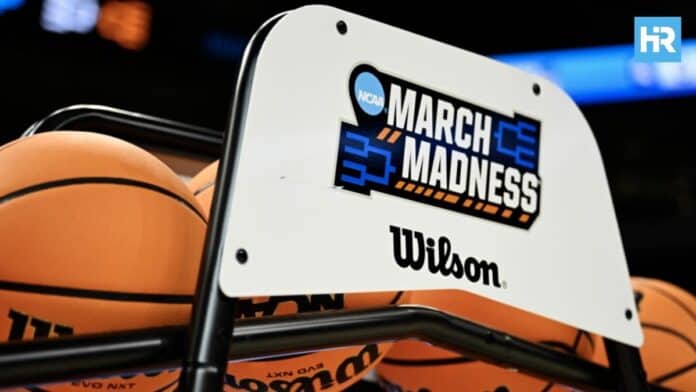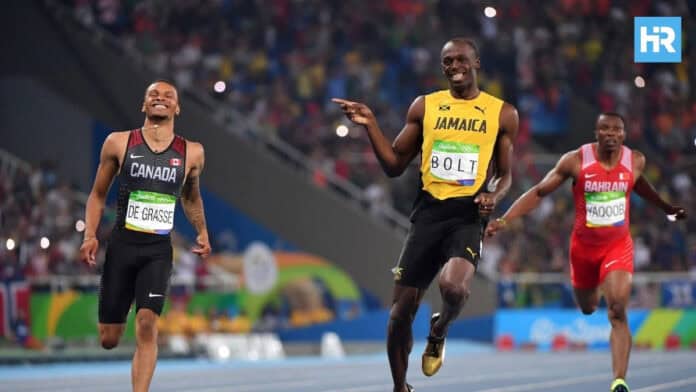After weeks of speculation, Selection Sunday did not disappoint. The NCAA Men’s Basketball Selection Committee pulled back the curtain on the 2025 NCAA Tournament bracket, revealing all 68 teams that will battle it out for college basketball’s most coveted title.
The full seed list shows how the committee evaluated each team, with intriguing choices throughout—starting with Auburn (28-5) as the No. 1 overall seed.
Auburn leads the South Region, followed by Duke (31-3) in the East, Houston (30-4) in the Midwest, and Florida (30-4) in the West.
St. John’s (NY) (30-4) secured the final No. 2 seed, Kentucky (22-11) settled comfortably at No. 3, and Oklahoma (20-13) earned a No. 9 seed despite previous bubble concerns.
At the bottom of the list, Saint Francis (16-17) claimed the final spot at No. 68.
- Auburn earned the No. 1 overall seed, followed by Duke, Houston, and Florida as the other top seeds in their respective regions.
- The SEC dominated with a record-setting 14 teams earning bids to the tournament.
- Power rankings and BetMGM odds spotlight Duke as the title favorite, while dark horses like UC San Diego and Drake are poised for potential upsets.
Full Seed List from 1 to 68: Auburn to Saint Francis
The complete seed list includes these teams:
Top 20 Seeds:
- Auburn (28-5)
- Duke (31-3)
- Houston (30-4)
- Florida (30-4)
- Tennessee (27-7)
- Alabama (25-8)
- Michigan State (27-6)
- St. John’s (30-4)
- Texas Tech (25-8)
- Iowa State (24-9)
- Kentucky (22-11)
- Wisconsin (26-9)
- Texas A&M (22-10)
- Purdue (22-11)
- Maryland (25-8)
- Arizona (22-12)
- Michigan (25-9)
- Clemson (27-6)
- Oregon (24-9)
- Memphis (29-5)
Seeds 21 to 40:
- BYU (24-9)
- Illinois (21-12)
- Missouri (22-11)
- Ole Miss (22-11)
- UCLA (22-10)
- Marquette (23-10)
- Saint Mary’s (28-5)
- Kansas (21-12)
- Louisville (27-7)
- Gonzaga (25-8)
- UConn (23-10)
- Mississippi State (21-12)
- Creighton (24-10)
- Georgia (20-12)
- Baylor (19-14)
- Oklahoma (20-13)
- Arkansas (20-13)
- New Mexico (26-7)
- Vanderbilt (20-12)
- Utah State (26-7)
Seeds 41 to 60:
- Texas (19-15)
- Xavier (21-11)
- San Diego State (21-9)
- Drake (30-3)
- VCU (28-6)
- North Carolina (22-13)
- UC San Diego (30-4)
- Colorado State (25-9)
- McNeese (27-6)
- Liberty (28-6)
- Yale (22-7)
- High Point (29-5)
- Akron (28-6)
- Grand Canyon (26-7)
- Lipscomb (25-9)
- Troy (23-10)
- UNCW (27-7)
- Montana (25-9)
- Robert Morris (26-8)
- Wofford (19-15)
Seeds 61 to 68:
- Omaha (22-12)
- Bryant (23-11)
- Norfolk State (24-10)
- SIUE (22-11)
- American (22-12)
- Mount St. Mary’s (22-12)
- Alabama State (19-15)
- Saint Francis (16-17)
Odds to Win the Championship: Duke Leads the Field
Next, let’s look at the odds of winning the national title. These odds, provided by BetMGM as of March 17, give a clear view of who is expected to go far in the tournament.
Top 4 Favorites:
- Duke (+350)
- Florida (+350)
- Auburn (+425)
- Houston (+625)
Other Contenders:
- Alabama (+1,600)
- Tennessee (+1,800)
- St. John’s, Michigan State (+2,500 each)
- Texas Tech, Iowa State (+3,500 each)
Dark Horse Teams (Odds between +5,000 and +15,000):
- Maryland, Wisconsin, Gonzaga, Arizona, Kentucky, UConn (+5,000)
- Kansas, Illinois, Missouri, Michigan (+8,000)
- Saint Mary’s, Marquette, Louisville, Ole Miss, UCLA (+12,500)
- Creighton, Oregon (+15,000)
Possible Cinderella Teams (Odds +25,000 to +50,000):
- VCU (+25,000)
- Vanderbilt, New Mexico, Arkansas, North Carolina, Memphis (+30,000)
- Georgia (+35,000)
- Oklahoma, Xavier, San Diego State, Texas, Utah State, Colorado State, Drake, UC San Diego (+50,000)
Longshots (+100,000 or more):
- Alabama State, Mount St. Mary’s, SIUE, American, Norfolk State, Saint Francis (+200,000)
- High Point, Lipscomb, Wofford, Bryant, Omaha, Montana, Liberty, Yale, McNeese, Grand Canyon (+100,000)
In-Depth Look: Duke Tops Rankings, SEC Sends Most Teams
Let’s take a closer look at Duke, the team ranked No. 1 in most power rankings and the only team with 31 wins this season.
Duke is sitting at the top of the power rankings for a reason—actually, for many reasons.
First off, they’re the only team in this year’s tournament with 31 wins (31-3 record). That’s right—no other team has cracked 31 victories this season.
They’ve been a force all year long, and their spot as the No. 1 seed in the East Region feels more than earned.
Leading the charge is freshman phenom Cooper Flagg, who’s putting up 18.9 points, 7.5 rebounds, and 4.1 assists per game—all while coming off an ankle injury he suffered in the ACC quarterfinals.
Despite the scare, Flagg is expected to be fully ready for tournament play. He’s the most talked-about player in college basketball since Zion Williamson—and, fittingly, Duke’s last No. 1 seed was in 2019, Zion’s year.
Flagg isn’t carrying the load alone. Kon Knueppel, a smooth-shooting guard, is adding 14.4 PPG, and junior Tyrese Proctor has been rock-solid all year, showing leadership and consistency.
Duke is also the only team in the tournament ranked in the top five in both adjusted offensive and defensive efficiency, according to KenPom, which makes them dangerous on both sides of the floor.
Coach Jon Scheyer, in his third year, has built a deep, well-balanced squad that’s ready to win it all if they stay healthy and focused.
Auburn, Houston, Florida — Other Top Seeds with Big Expectations
Now, while Duke is the betting favorite, Auburn comes in as the No. 1 overall seed and tops the South Region.
The Tigers finished 28-5 but lost three of their last four games—a concerning trend for some, but not enough to shake their top status.
Why? Because when they’re playing their best, they’re arguably better than anyone.
Johni Broome is their anchor—one of the top players in college basketball. Add in Denver Jones and Dylan Cardwell, and you’ve got a team that’s fast, tough, and deep.
Auburn is ranked No. 1 in offensive efficiency at KenPom, and coach Bruce Pearl knows how to rally his team.
They’re also out to prove something, especially after being upset in the first round by Yale in 2024.
History isn’t on their side: no team has ever won the NCAA title after losing three of its last four regular season games. But hey, there’s a first for everything.
Houston, meanwhile, is the most defensively dominant team in the tournament. Nine times this season, the Cougars held opponents to 50 points or fewer—no other team can say that.
They’re also fourth in the nation in 3-point shooting at 39.8%. Guards LJ Cryer, Milos Uzan, and Emanuel Sharp all shoot over 40% from beyond the arc, making them lethal from deep.
The big question is center J’Wan Roberts, who’s nursing an ankle injury. His status could make or break their Final Four hopes.
And then there’s Florida, who many consider the hottest team entering March Madness. They’ve been nearly unbeatable over the last five weeks. The backcourt trio of Walter Clayton Jr., Alijah Martin, and Will Richard is arguably the best guard group in the country.
But don’t overlook their big men: Alex Condon (6’11”) and Micah Handlogten (7’1″) bring size and skill, which makes Florida a threat at all levels.
They’re adaptable, they play smart, and coach Todd Golden has built the best Gators team in over a decade.
Fun fact: Golden has never won an NCAA Tournament game—yet.
SEC Sets Record with 14 Teams, Underdogs Ready for Upsets
The SEC sent 14 teams to the NCAA Tournament, the most by any conference in history, which shows the depth of the league’s talent.
For example, Missouri went winless in the SEC last season, but this year, they have a 22-11 record and one of the best shooting offenses in the country.
St. John’s (NY) is another team making headlines, returning to the tournament for the first time since 2019 with 30 wins and the best defense in the nation.
Their top player is RJ Luis (18.4 PPG, 7.2 RPG), who won Big East Player of the Year, and coach Rick Pitino has now led six different teams to the NCAA Tournament, setting an NCAA record.
Let’s look at Saint Francis (16-17), the No. 68 seed and last team in the field.
This is their second NCAA Tournament appearance, the first since 1991, and they are coached by Rob Krimmel, who played for the school from 1996 to 2000 and has been head coach for 13 years.
Though they have a losing record, their story shows what makes March Madness special and unpredictable.
Also in the spotlight is UC San Diego, which joined Division I only five years ago and now qualifies for the NCAA Tournament for the first time.
Another team to watch is Drake (30-3), led by Bennett Stirtz (19.1 PPG), who has been one of the most productive and efficient players in the country this season.
These teams, though lower-seeded, are capable of surprising higher seeds and becoming Cinderella stories, something that fans often look forward to during March Madness.
















